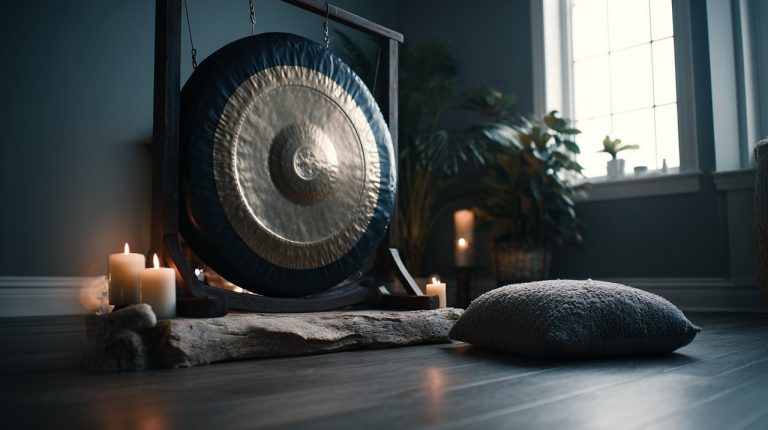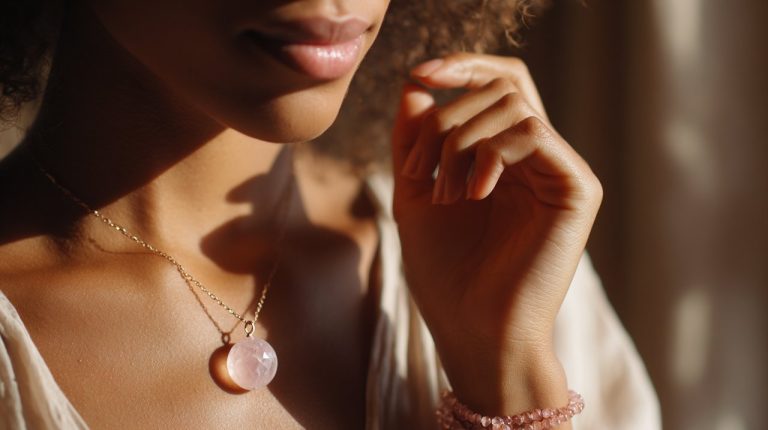Buddhist Pendant Necklace Guide: Finding Your Spiritual Symbol
There’s a subtle, yet profound, moment when you first hold a Buddhist pendant. It’s like a quiet handshake between ancient wisdom and your present intentions, a bridge connecting timeless spiritual insights with your personal journey.
More than just a beautiful accessory, a thoughtfully chosen Buddhist pendant necklace transforms into a deeply personal talisman. It becomes a constant, supportive companion as you navigate life’s ever-unfolding path. Our goal here is to help you discover that perfect spiritual ally, one that truly resonates with your unique journey.
The Profound Language of Buddhist Symbols
Buddhist pendants are steeped in profound meanings, carrying wisdom that has journeyed across centuries and cultures. Think of each symbol—be it the serene Buddha, the unfolding lotus flower, or the intricate sacred mantras—as a concise story, a visual narrative of spiritual awakening and inner peace.
When you’re exploring different designs, pause to consider: Which symbols genuinely speak to your current life circumstances or deepest spiritual aspirations? This isn’t just about aesthetics; it’s about finding a symbol that reflects your inner world.
Take, for instance, the universally recognized Om Mani Padme Hum mantra, often beautifully inscribed on pendants. It’s more than just a sequence of syllables; it’s a profound journey in miniature, symbolizing the path from impurity to enlightenment. Its very vibration is believed to gently purify negative energies and cultivate boundless compassion with every glance or touch throughout your day. It’s like a spiritual compass, constantly recalibrating your inner state.
Beyond the symbols themselves, the very material of your pendant holds its own energetic signature. For example, silver often symbolizes purity and clarity of mind, while jade, particularly cherished in Eastern traditions, represents harmony, balance, and protection. Each material adds another layer to your pendant’s story.
Matching Pendants with Your Personal Journey
Your intuitive response to a pendant is often the clearest indicator of a deep connection. As you browse, notice which designs or materials naturally draw your attention. That subtle pull isn’t random; it frequently signals an alignment with your current spiritual needs or the energies you seek to cultivate.
Consider the core intention behind wearing your pendant. Are you seeking protection during challenging times? The fierce, yet compassionate, energy of a Vajra pendant might offer the strength you need. Perhaps you yearn for balance and harmony? A Yin-Yang design could serve as a daily, gentle reminder of life’s complementary forces.
Buddhist tradition also incorporates zodiac symbols, offering another fascinating layer of personalization. These symbols connect cosmic energies with your birth circumstances and inherent qualities, acting as potent reminders of both your inherent strengths and the areas ripe for growth on your spiritual path.
Caring for Your Buddhist Pendant: A Mindful Practice
A Buddhist pendant is more than an object; it absorbs energy from its surroundings and from you, its wearer, forging a subtle energetic bond over time. Treating your pendant with reverence isn’t just about maintenance—it’s a mindfulness practice that deepens your relationship with this spiritual anchor.
Physically, occasional cleansing with a soft cloth maintains its luster. Spiritually, however, you might consider refreshing its energetic properties. Many practitioners find rituals like placing it under moonlight or near incense to be profoundly beneficial. This ritualistic care often deepens one’s connection to the principles the pendant represents.
It’s also worth noting that authentic Buddhist pendants are created with immense mindfulness and intention. The craftsmanship itself is a reflection of the spiritual principles embodied in the symbol, making the creation process as sacred and meaningful as the finished piece.
Materials and Their Metaphysical Properties
Just as symbols carry meaning, different materials possess unique vibrations that beautifully complement the Buddhist symbols they embody. Natural materials like sandalwood or agarwood, for instance, bring an earthy, grounding energy and a subtle, calming fragrance that can significantly enhance meditation practices.
Gemstones, when incorporated into Buddhist pendants, contribute their own distinct healing properties. For example:
- Tiger Eye promotes courage, inner strength, and protection, empowering you to face challenges with confidence.
- Chalcedony encourages peaceful communication, emotional balance, and a sense of calm—qualities that align beautifully with Buddhist teachings of mindful speech and compassionate action.
Then there’s cinnabar, a material revered in Eastern traditions for its transformative properties. It symbolizes the profound alchemical process of spiritual development—the journey of refining base consciousness into enlightened awareness, much like the Buddhist path itself. Its rich crimson hue often evokes passion and vitality on this transformative journey.
Integrating Your Pendant into Daily Practice
A Buddhist pendant truly blossoms in meaning when it becomes an active part of your spiritual practice. Some practitioners find it grounding to gently hold their pendant during meditation, using it as a tactile focal point to anchor wandering thoughts and deepen concentration.
Consider integrating it into your morning rituals. A moment of reflection while putting on your necklace can become a powerful way to set an intention for the day, allowing the pendant to serve as a tangible reminder of the qualities you wish to embody. This simple act transforms a beautiful object into a potent tool for mindfulness.
Similarly, an evening reflection with your pendant can become a gentle review of how effectively you embodied its qualities throughout your day. This practice aligns perfectly with the reflective nature of cultivating greater awareness and compassion.
The journey with your Buddhist pendant often deepens significantly with time. As your understanding of its symbolism grows alongside your spiritual practice, what began as an aesthetic choice frequently evolves into a cherished companion on your path toward greater awareness and compassion—the true essence behind any meaningful Buddhist pendant selection.
💡 Frequently Asked Questions
A Buddhist pendant necklace is more than just adornment; it transforms into a personal talisman and spiritual companion that accompanies one through life's journey, carrying profound meanings of spiritual awakening and inner peace.
Common symbols include the Buddha figure, the lotus flower, and sacred mantras like 'Om Mani Padme Hum.' The mantra represents the journey from impurity to enlightenment and is believed to purify negative energy and foster compassion.
Materials commonly used include silver, symbolizing purity and clarity; jade, representing harmony and balance; sandalwood or agarwood for earthy grounding energy; and gemstones like Tiger Eye for courage and chalcedony for peaceful communication. Cinnabar symbolizes transformation.
To choose a pendant, notice which designs or materials intuitively draw your attention. Consider your intention for wearing it, such as seeking protection or balance, and how zodiac symbols might align with your birth circumstances.
Physically, cleanse your pendant with a soft cloth to maintain its luster. Energetically, treat it with reverence, and refresh its properties through spiritual cleansing, such as placing it under moonlight or near incense.







